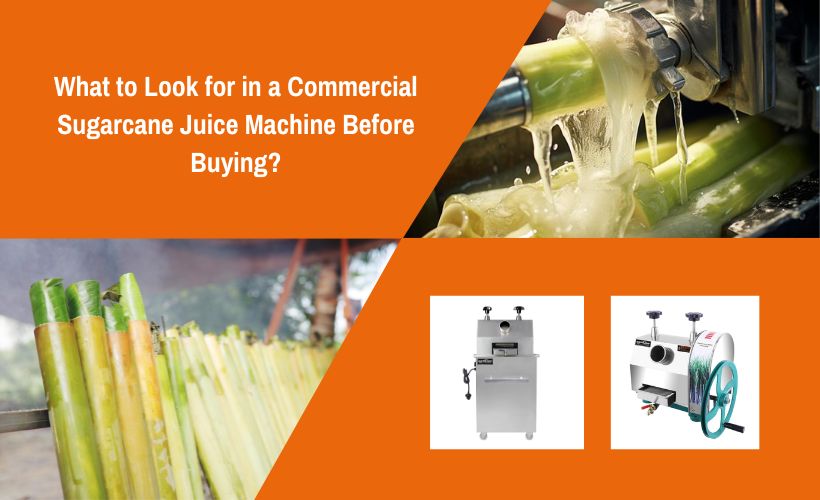Sugarcane juice is a refreshing and increasingly popular beverage, making a sugarcane juice machine a potentially lucrative investment for your business. With numerous options available, selecting the right machine requires careful consideration. Here are the key factors to keep in mind before making your purchase:
1. Capacity and Output
The first and foremost consideration is the machine’s capacity. How much juice do you anticipate producing daily? Consider peak hours and customer flow. Look for machines with a high crushing capacity (measured in kg/hour) and a powerful motor. A higher motor horsepower ensures faster and more efficient juice extraction. Also, evaluate the size of the feeding chute—a wider chute allows for processing larger sugarcane stalks, saving time and effort.
2. Build Quality and Durability
Commercial machines endure heavy usage, so durability is crucial. Opt for a sugarcane juice making machine made from high-quality stainless steel, which is robust, corrosion-resistant, hygienic, and easy to clean. Check for sturdy welding and solid construction to ensure longevity and reduce maintenance costs.
3. Juice Extraction Efficiency
The core function of the juice machine sugarcane is to extract maximum juice. Look for machines with multiple rollers, preferably three, as they exert more pressure, leading to a higher juice yield and drier bagasse (the fibrous residue). Some machines feature adjustable roller pressure, allowing optimization based on the sugarcane variety.
4. Hygiene and Ease of Cleaning
Hygiene is a critical factor in juice preparation. Choose an automatic sugarcane juice machine with smooth surfaces and minimal crevices to prevent bacteria buildup. Features such as removable parts, a drip tray, and a built-in filter simplify cleaning. Some advanced models even offer self-cleaning functions.
5. Safety Features
Safety is non-negotiable. Ensure the juice machine has essential safety features like an emergency stop button, overload protection, and a secure feeding chute. Look for certifications that comply with safety standards.
6. Motor Power and Efficiency
A powerful motor is necessary for efficient juice extraction, especially during peak hours. Consider the motor’s power rating (HP or kW) and energy efficiency. An energy-efficient motor reduces power consumption and lowers operating costs.
7. Maintenance and Service
Reliable after-sales service is essential for smooth operation. Inquire about the availability of spare parts and maintenance services. Check for warranty periods and customer reviews regarding service quality.
8. Noise Level
Commercial environments can be noisy, and excessive machine noise can disrupt the ambiance. Choose an automatic sugarcane juice machine with a relatively low noise level to create a pleasant atmosphere for customers and staff.
9. Budget and Value for Money
While price is a factor, prioritize value for money. Consider the long-term cost of ownership, including maintenance, repairs, and energy consumption. Investing in a high-quality juice machine may have a higher upfront cost but can save you money in the long run.
10. Brand Reputation and Reviews
Research different brands and read customer reviews. Opt for a reputable brand with a proven track record of producing reliable and efficient juice machine sugarcane models. A trusted brand ensures better performance and long-term satisfaction.
By carefully evaluating these factors, you can make an informed decision and select a machine that meets your business needs. Prioritizing quality, efficiency, and safety will help ensure a successful and profitable venture, delivering delicious, refreshing juice to your customers every day.
FAQ
Q1. What to look for when buying sugar cane?
Fresh sugarcane should give a moist and radiant tone to the skin. A ripe sugarcane should be light to golden yellow in appearance. Ripe sugarcane should feel hard, and gives a “knocking” sound when you tap it. If the sugarcane is green but hard, it may also be ripe.
Q2. What is the working principle of a sugarcane juice machine?
The can is passed in through an inlet, and it goes through a roller or series of rollers. The rollers exert a lot of force crushing the sugarcane and extracting the juice. The juice comes out through a tap outlet while the roughages are expelled out another outlet.




